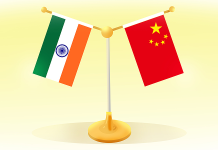As the global trade landscape quakes under President Donald Trump’s tariff policies, exporters worldwide find themselves at a crossroads of caution and opportunity. In a dramatic pivot announced on April 9, 2025, Trump paused sweeping reciprocal tariffs on most nations for 90 days, sparing all but China, which now faces a staggering 125% duty on its imports to the U.S. This unexpected reprieve, coupled with the intense focus on China, has sparked a complex response among exporters—wary of uncertainty yet hopeful for new prospects. The story of this moment is one of strategic recalibration, resilience, and a bold reimagining of global commerce.
In This Article:
The Tariff Rollercoaster
Trump’s tariff saga began with a promise to overhaul trade, branding April 2, 2025, as “Liberation Day” for American workers. Initially, he imposed a 10% baseline tariff on nearly all imports, with higher levies targeting countries like Canada (25%), Mexico (25%), and China (34%). The rationale? To counter trade deficits and perceived unfair practices, forcing nations to treat U.S. exports equitably. However, the global backlash was swift—China, Canada, and the EU retaliated with tariffs on $330 billion of U.S. goods, threatening a full-scale trade war. Markets plummeted, and exporters braced for higher costs and disrupted supply chains.
The April 9 pause changed the game. By halting tariffs on most nations, Trump signaled openness to negotiations, citing bilateral trade talks as the path forward. China, however, remained the outlier, hit with a 125% duty to curb its $419 billion trade surplus with the U.S. and address issues like intellectual property theft. For exporters, this shift lifted immediate pressures but introduced fresh uncertainties—would the pause hold, and how would China’s response reshape trade flows?
Exporters’ Cautious Calculus
The pause has brought palpable relief, particularly for industries like India’s textiles and auto components, which feared a 27% U.S. tariff. Exporters in nations like Vietnam, Mexico, and the EU, initially facing double-digit duties, now have breathing room to reassess strategies. The garment sector, for instance, anticipates stable U.S. demand, while engineering firms eye opportunities to fill gaps left by pricier Chinese goods. Yet, caution prevails—nothing is final. The 90-day window demands agility, as exporters monitor U.S. talks and prepare for potential tariff reinstatement.
China’s exclusion fuels wariness. Its retaliatory measures, including 84% tariffs on U.S. exports, could flood alternative markets with low-cost Chinese products, challenging exporters elsewhere. India, for example, is tightening rules of origin to block Chinese goods rerouted through third countries. Meanwhile, currency fluctuations—like Mexico’s peso dropping 30% since April 2024—complicate pricing strategies, forcing exporters to hedge risks while capitalizing on competitive edges.
Optimism Amid Opportunity
Despite the uncertainty, exporters spy silver linings. The U.S.’s hard line on China opens doors for others to capture market share. India’s Commerce Minister Piyush Goyal, meeting export councils on April 9, pledged a 24/7 helpline to navigate the shifting landscape, urging firms to boost global trade. Sectors like electronics and pharmaceuticals see a chance to replace Chinese suppliers, especially as U.S. firms seek diversified sourcing to avoid tariffs. Vietnam and Mexico, already beneficiaries of U.S.-China trade tensions, anticipate further investment as companies shift production.
The pause also fuels hope for bilateral deals. Nations are scrambling to negotiate with the U.S., aiming to secure exemptions or lower duties. Exporters in allied countries like Japan and the EU are optimistic about concessions, given Trump’s hint at “giving breaks” to cooperative partners. For smaller economies, the tariff reprieve preserves access to the U.S., the world’s largest consumer market, sustaining jobs and growth.
Trump’s tariff gambit, with its pause on most nations and laser focus on China, has exporters balancing vigilance with ambition. The 90-day window is a crucible—testing resilience, demanding innovation, and offering a shot at redefining trade roles.
-By Manoj H




